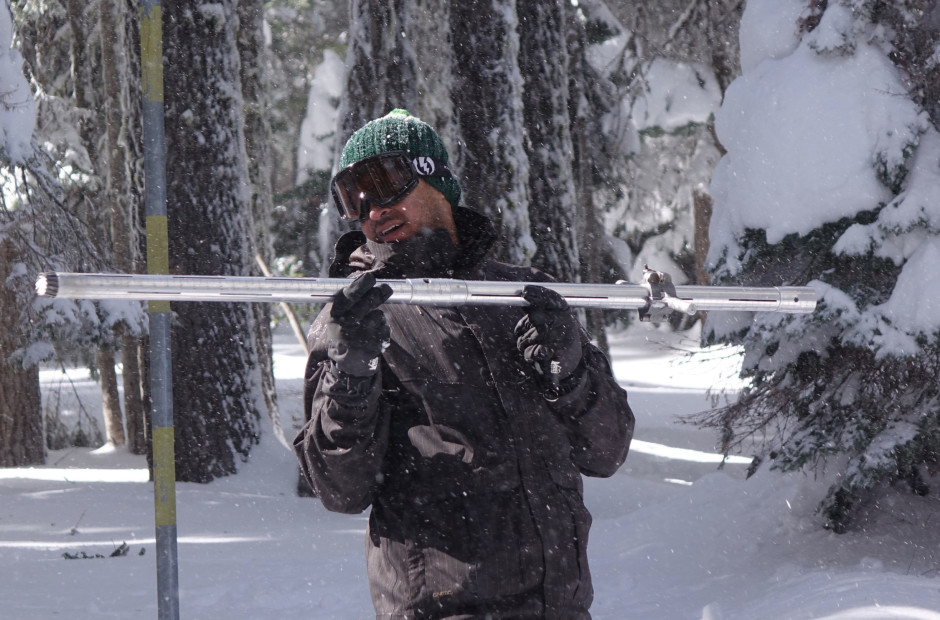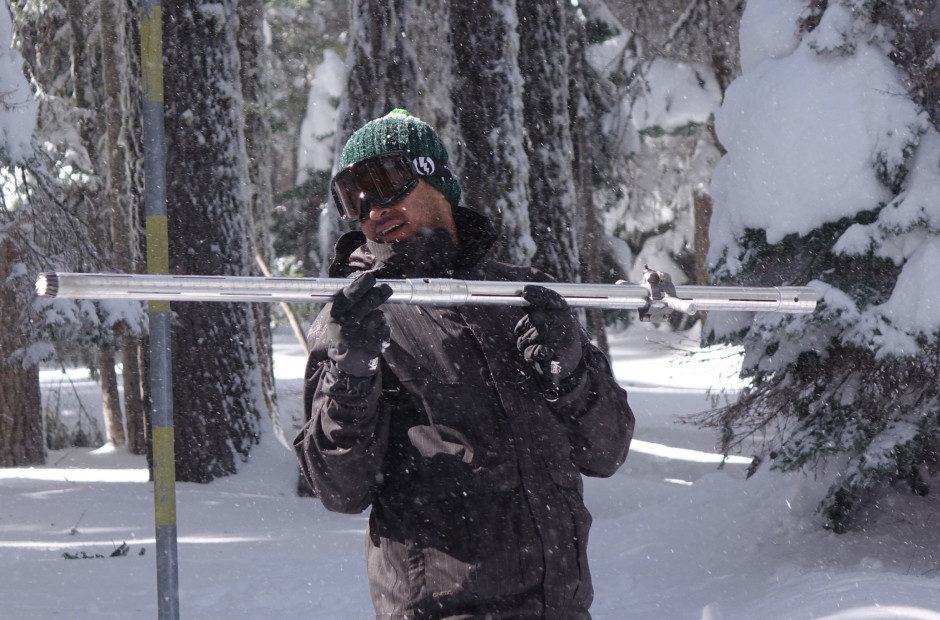
Northwest Drought: Washington Looks Good, But Another Low Snow Year Will Test Oregon
Listen
Shavon Haynes tromps into a small, quiet clearing in the woods on Mount Ashland. He drops a black pack into the knee-deep snow. He pulls out a snow sampler, two lengths of worn metal pipe and screws them together.
“I’ve dubbed it Excalibur, because when it’s put together it looks like a large sword. And Excalibur is the only sword I really know the name of,” he says.
Haynes works as the Jackson County Watermaster. He plunges Excalibur into a fresh patch of snow, calling out a measurement to his colleague Ben Thorpe.
“So we got a depth of 29 and a half,” Haynes says.
And he and Thorpe weigh the snow core they pull out to figure out the density — or just how much water it contains, which is also called the “snow water equivalent.”
“It’s definitely less than last year,” Haynes says of the snowpack they find at the four sites on Mount Ashland. “And less than normal.”
This late-season snow near the Oregon-California border will feed the Klamath Basin. It’s been welcome, but the snowpack is still less than half of what an average winter brings. And that’s no good for the region.
Writing On The Wall
Every year about this time the Pacific Northwest really starts paying attention to the amount of snow in the mountains. It lets us know how much water we’ll have this summer for fish, agriculture and people.
Most of Washington has had above average snow this winter, but the situation gets more dicey the farther south you travel.
About half of Oregon is experiencing moderate drought already, and it looks like the Klamath Basin is once again going to be a focal point of water conflict in the West.
“The writing, I think at this point, is on the wall. There are going to be shortages this year,” said Scott White, executive director of the Klamath Water Users Association. “Even if it kept snowing and snowing and snowing, it’s going to stop and there’s not going to be enough water to go around.”
Drought is not new here in the Klamath Basin. There’s been a governor-declared drought 10 of the past 16 years.
But White says this year is different. The federal programs that subsidized farmers to idle land and pump groundwater in the past are gone. And a bill that would have given irrigation districts more flexibility to move water around didn’t get play this session in the Oregon Legislature.
“My message to the public was, ‘Hey, you guys really need to start thinking about what you’re going to be doing on farm,’” White said. “What are your operations going to look like this year? You need to be thinking about this on your own. Don’t plan on getting saved.”
At a meeting in late February, Klamath County commissioners did what they could. They voted to ask the state for yet another drought declaration estimating they’re facing half a billion dollars in losses.
“Hopefully we can help get some government assistance to keep our agricultural community alive in 2018,” said Commissioner Donnie Boyd at the meeting.
Commissioners said they expected to hear from the state in mid-March, which could open up some state relief programs. After a state issues a drought declaration, then the federal government considers the request, potentially opening up even more aid for farmers and ranchers in the Klamath Basin.
Fish Need Water Too
Of course, in the Klamath Basin, agriculture is only part of the story. The other big piece is fish.
Klamath River salmon runs continue to struggle. Disease and high water temperatures linked to low flows are considered a factor.
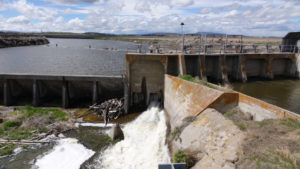
Irrigation infrastructure on the Klamath Project. CREDIT: JES BURNS/EARTHFIX/OPB
A petition from the Karuk Tribe and the Salmon River Restoration Council has prompted federal mangers to consider whether to add the river’s spring chinook to the endangered species list. The Klamath River coho salmon are already listed.
Last year a 200-mile chunk of the West Coast off Oregon and California closed to commercial salmon fishing because of low counts. This year’s ocean salmon forecast is better, but the fishery could still be limited. Catch allowances will be determined in early April.
Higher up in the basin, the Klamath Tribes have given notice they intend to sue federal agencies for not adequately protecting two species of endangered sucker fish. They’re demanding more water be held in Upper Klamath Lake.
“The current trajectory for our fish, basically they’ll be going extinct in the next five, ten years unless something very serious takes place,” said Don Gentry, chairman of the Klamath Tribes.
This year will be the first bad water year since 2015, when a long-negotiated water-sharing compromise fell apart after Congress failed to authorize it.
Oregon politicians are pushing the federal government to step up. But in the meantime, without the common ground of a compromise deal on the table, Gentry says relationships between farmers, tribes and other water users have become strained. And this year’s drought promises to test the Klamath Basin in a way it hasn’t been tested in decades.
“It’s kind of pushed us in a corner,” he said. “And that’s one thing we have in common, we’re all pushed into a corner.”
Copyright 2018 EarthFix Media
Related Stories:
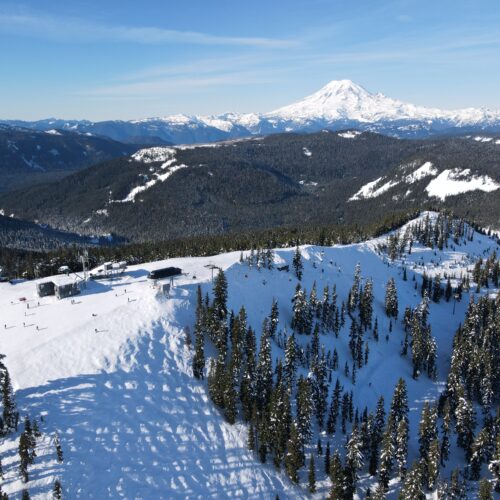
As Northwest snowpack grows, ski resorts open early
A drone photo shows White Pass Ski Area in Naches, Washington, on Dec. 1, 2024. (Credit: Andy Mahre / White Pass Ski Area) Listen (Runtime 1:00) Read Fresh white powder
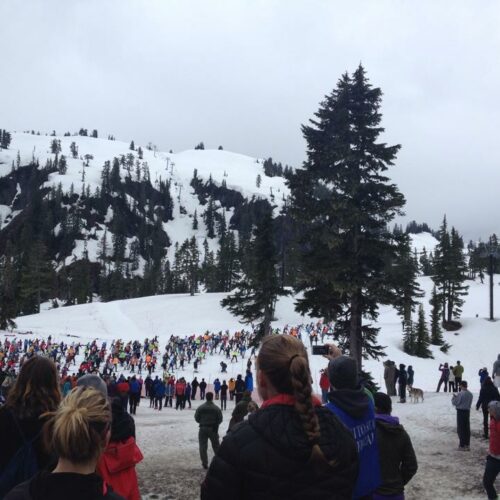
Nerves slippery for Washington’s Ski to Sea race
Cross country skiers line up at the start of the 2014 Ski to Sea race. (Credit: Courtney Flatt / Northwest News Network) Listen (Runtime 1:04) Read Snow-covered undulating trails will
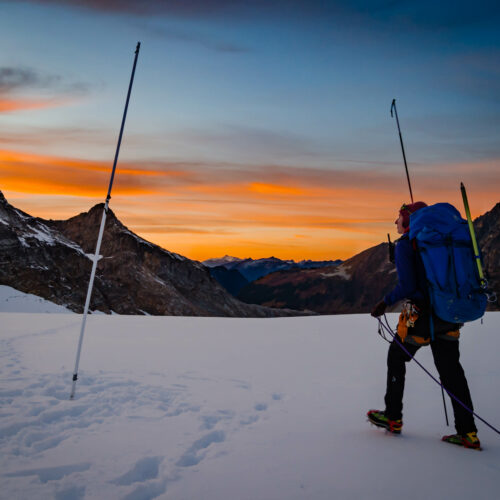
Spring snowpack levels in North Idaho lowest in 40 years
Erin Whorton, a hydrologist for the Natural Resources Conservation Service, measures snow on South Cascade Glacier in Washington. (Credit: Erin Whorton / NRCS) Listen (Runtime :58) Read The snowpack in

